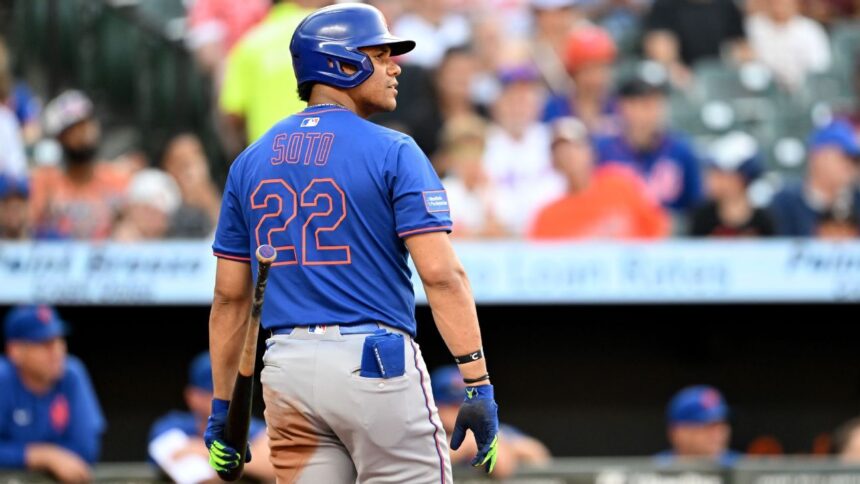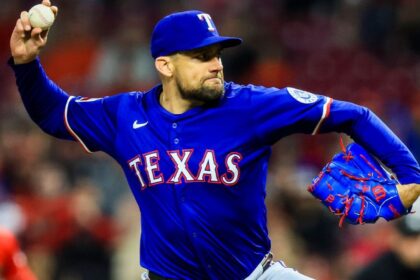Key MLB Stories of the First Half of the Season
The MLB season has reached its midpoint. Although, in reality, we have already witnessed almost 60% of the schedule, the tradition of dividing the season into two halves, marked by the All-Star break, remains in effect. Now that the All-Star festivities are over, it’s time to review the narratives that dominated the first half and how they might unfold for the rest of the season. Here are the ten most outstanding stories of the 2025 season.Honorable Mentions
Before diving into the top 10, it’s fair to acknowledge some special mentions that deserve attention: the disappointing seasons of the Baltimore Orioles and the Atlanta Braves; the dominance of the Houston Astros in the American League West despite the injury of Yordan Álvarez, the loss of Alex Bregman and the transfer of Kyle Tucker; the .332 average of rookie Jacob Wilson; the incredible year of Matthew Boyd with the Chicago Cubs; the return of Jacob deGrom; Eugenio Suarez’s four-home run game; and Denzel Clarke’s spectacular catches in center field with the Athletics.1. Chaos in the American League East
The American League East has been a whirlwind of emotions this season, with plot twists worthy of a suspense novel. The New York Yankees seemed poised to dominate the division at first, building a seven-game lead at the end of May, but since June 13th they have had an 11-18 record, which has generated concern among their followers. On the other hand, the Toronto Blue Jays starred in a streak of 10 consecutive victories at the end of June and the beginning of July, catapulting themselves to first place. The Tampa Bay Rays, playing in a spring training facility, performed well in May and June, but in July they have had a 3-9 record, falling to fourth place. And the Baltimore Orioles? They fired their manager and could trade half the team at the trade deadline. But the biggest drama is starring the Boston Red Sox. The saga of Rafael Devers, which began in spring training with complaints about his role as a designated hitter, a disappointing start to the season, some moments of good hitting, his refusal to play first base and, finally, the shocking transfer to the San Francisco Giants, a few hours after Boston completed a three-game sweep against the Yankees. This was followed by a streak of six consecutive losses, plunging the Red Sox organization into an atmosphere of bad luck. However, in baseball, the script can change quickly: The Red Sox won their last 10 games before the All-Star break, have positioned themselves for a wild card, are only three games out of first place, and have recovered Bregman from the injured list.He could be right, at least if the pitching performs as it did during that 10-win streak, when the pitching staff had an ERA of 1.90. The excitement in this division is assured, and the fight for qualification promises to be intense in the second half of the season.“I think there’s a real possibility that, at the end of the season, we’ll see that we’ve won more games than we would have otherwise,” Red Sox chief baseball operations officer Craig Breslow stated after the Devers trade.
Craig Breslow
2. The Interesting National League Central Division
The Cubs boast a formidable lineup, led by MVP candidate Pete Crow-Armstrong, the also All-Star Tucker, the red-hot Michael Busch, who ranks fifth in the league in OPS, and Seiya Suzuki, with 25 home runs and 77 RBIs. In addition, they have an All-Star pitcher in Boyd, Shota Imanaga with an ERA of 2.65, and a very solid bullpen. Not to mention their catchers, who have a combined 20 home runs, 65 RBIs, and the second-best OPS in the league. Despite all this, the Milwaukee Brewers are only one game away. How is it possible? They find ways to score runs without relying on home runs; they are 23rd in home runs, but seventh in runs scored, thanks to their speed and aggressiveness on the bases. As always, they somehow manage to have enough pitching, and the trio of relievers, Trevor Megill, Abner Uribe, and Jared Koenig, has become one of the most imposing in the final innings. The Brewers are a real contender, with seven straight wins before the All-Star break. Although they begin the second half with a difficult series against the Los Angeles Dodgers and the Mariners, and then a home series against the Cubs at the end of July, there’s a reason the Brewers have made the playoffs in six of the last seven seasons: This team knows how to win. In addition, they have recently added two key players: Brandon Woodruff, finally recovered from shoulder surgery, and rookie Jacob Misiorowski, who has a 4-1 record with a 2.65 ERA in five starts, dominating with his fastball that averages 99.3 mph. Misiorowski could be one of the most important players for the remainder of the season: If he maintains this level, and with Woodruff showing his pre-injury form, the trio of Freddy Peralta, Woodruff, and Misiorowski will be a fearsome rotation in October.3. The Epic Race for the American League MVP
The race for the American League Most Valuable Player is exciting. Behind curtain number 1: Cal Raleigh, on track to break the American League record with 64 home runs (currently has 38) and starring in perhaps the best offensive season by a catcher in history. Behind curtain number 2: Aaron Judge, on his way to accumulate 11.8 WAR and to sign one of the best offensive seasons in the history of the sport. It’s hard to imagine a hitter could connect for more than 50 home runs and not win the MVP award, but that could happen. Voters focus a lot on WAR these days, and Judge has the opportunity to achieve only the sixth 12-WAR season by a position player (three of the previous five were by Babe Ruth). That probably makes Judge the favorite, especially since he’s not far behind Raleigh with 35 home runs and is probably one hot hitting streak away from being on track for another 60-home run season. Let’s remember last season, in which Judge unanimously won the award over Witt. It’s hard to imagine Raleigh maintaining this pace, especially given his heavy workload behind the plate (he’s third in the league in innings as a catcher), and he’s been a bit one-dimensional in July (he only has five hits, all of them home runs). Judge is the heavy favorite in the betting.4. Pete Crow-Armstrong Leads the National League MVP Race

5. The Dodgers are unbeatable… no, they’re just very good… actually, they’re mediocre
The 8-0 start, following the offseason additions of Blake Snell, Roki Sasaki, and Tanner Scott, sparked rumors that the Dodgers could be one of the best teams of all time. Well, they’re not. Despite an inconsistent first half, filled with pitcher injuries and underperforming performances from players like Mookie Betts and Michael Conforto, the Dodgers are still on pace to win 97 games. A 2-7 skid before the break highlighted some of their issues: Betts has an OPS below .700, Freddie Freeman is batting .197 with one home run in his last 32 games, Scott has seven blown saves, the rotation ranks 20th in the league in ERA (and last in innings pitched), and the bullpen ranks 24th in ERA. Oh, and the Dodgers have used 35 pitchers this season. The question is whether the Dodgers can repeat as World Series champions.6. The Detroit Tigers have the best baseball record
Surprisingly, the Tigers, with the best record in the league (59-38) heading into the All-Star break, have exceeded expectations. They were ranked 18th in our preseason Power Rankings, with a projected record of 83-79, and only 11 of our 28 voters picked Detroit to win the division. Tarik Skubal has been excellent, as expected, but no one expected Javier Báez and Zach McKinstry to be selected for the All-Star game. Gleyber Torres, with an OBP of .387, has been one of the best signings of the offseason, and former No. 1 draft picks Spencer Torkelson and Casey Mize are having their best seasons.
7. Tarik Skubal, Paul Skenes, and an incredible season for pitchers
Skubal and Skenes were the All-Star Game starters, and that pair has led the way in what has been a stellar season for starting pitchers. At the break, we had 19 qualified pitchers with an ERA below 3.00, which would match 2022 as the most since 2014 (when there were 21). There are five other pitchers, who are not currently qualified, with at least 80 innings pitched and an ERA below 3.00, so the total could increase by the end of the season. Four of those pitchers also had an imposing strikeout rate above 30%: Skubal (33.4%), Zack Wheeler (33.0%), Garrett Crochet (31.2%), and Hunter Brown (31.1%). MacKenzie Gore, with an ERA of 3.02, is also above the 30% mark. Skenes has been the unluckiest pitcher of the season, maybe of the century: He has a 4-8 record despite having the best ERA in MLB (2.01), but could still be the favorite for the Cy Young. He could become the first Cy Young winner with a losing record (Jacob deGrom had a 10-9 record with the Mets in 2018 and Felix Hernandez had a 13-12 record with the Mariners in 2010). With so many pitchers having great seasons, Skubal and Skenes are not assured of Cy Young awards, with Crochet and Wheeler essentially in a statistical dead heat with them. Brown was in the American League race before allowing 10 runs in his last two starts before the break. Keep an eye on DeGrom, who has a 9-2 record with a 2.32 ERA and has already pitched more innings than in 2019.8. Juan Soto’s Turbulent Stage with the New York Mets
In his first month with the Mets, Soto batted .241/.368/.384 with only three home runs. Then he batted .219 in May. But the Mets were winning, and statistical evidence showed that Soto was hitting the ball hard and getting his walks, which meant he was the same Soto as always, only the hits weren’t falling. Since June 1, he has batted .311/.455/.659 with 14 home runs and is now among the league leaders in many categories. Despite the slow start, he is on pace to accumulate 6.5 WAR, which is not exactly what he did with the Yankees last season (7.9), but is in line with his career average per 162 games (6.3). In other words, it’s the same Juan Soto, except his best hitting has come when the Mets have struggled after their good start. With the Mets battling for the National League East title with the Philadelphia Phillies, it’s safe. Something to keep in mind: While Soto’s overall offensive numbers are returning to typical territory, he has hit just .183/.330/.390 with runners in scoring position and .176/.337/.340 with men on base. According to Baseball-Reference, he has an OPS of .783 in high-pressure situations, .773 in medium-pressure situations, and 1.053 in low-pressure situations. The Mets are paying Soto a lot of money to perform in those high-pressure moments, so if they want to surpass the Phillies, he will need to improve in those situations.9. Young hitters burst onto the scene

We saw James Wood and Junior Caminero in the Home Run Derby, and both are having excellent first full seasons in the Major Leagues. Wood has 24 home runs and ranks eighth in the league in OPS. Caminero has 23 home runs, but not the overall offensive numbers that Wood has. A year ago, Nick Kurtz had just been drafted in the first round by the Wake Forest Athletics and has now hit 17 home runs in 58 games after starting the season in Triple-A. In his last 26 games, he has batted .295/.385/.737 with 12 home runs and looks like he is becoming one of the best power hitters in the game.
Jac Caglianone, also in his first year after college, is still looking to get on track. He arrived in the Major Leagues with higher expectations than Kurtz, but has struggled with a .140 average and four home runs in 35 games, although he demonstrated his power with a 466-foot hit. These players are 22 years old. The game is in good hands. Caminero and the Rays are the only team in contention for the playoffs at the moment, although Caglianone’s Kansas City Royals are close enough to potentially re-enter the wild card race. Wood’s season has gone a bit unnoticed playing for the Washington Nationals, but he has an OPS+ of 160. In the wild card era since 1995, only five players in their 22-year-old season have reached that mark: Mike Trout (2014), Bryce Harper (2015), and Juan Soto, Vladimir Guerrero Jr., and Fernando Tatis Jr., all in 2021. Not bad to be part of that company.










